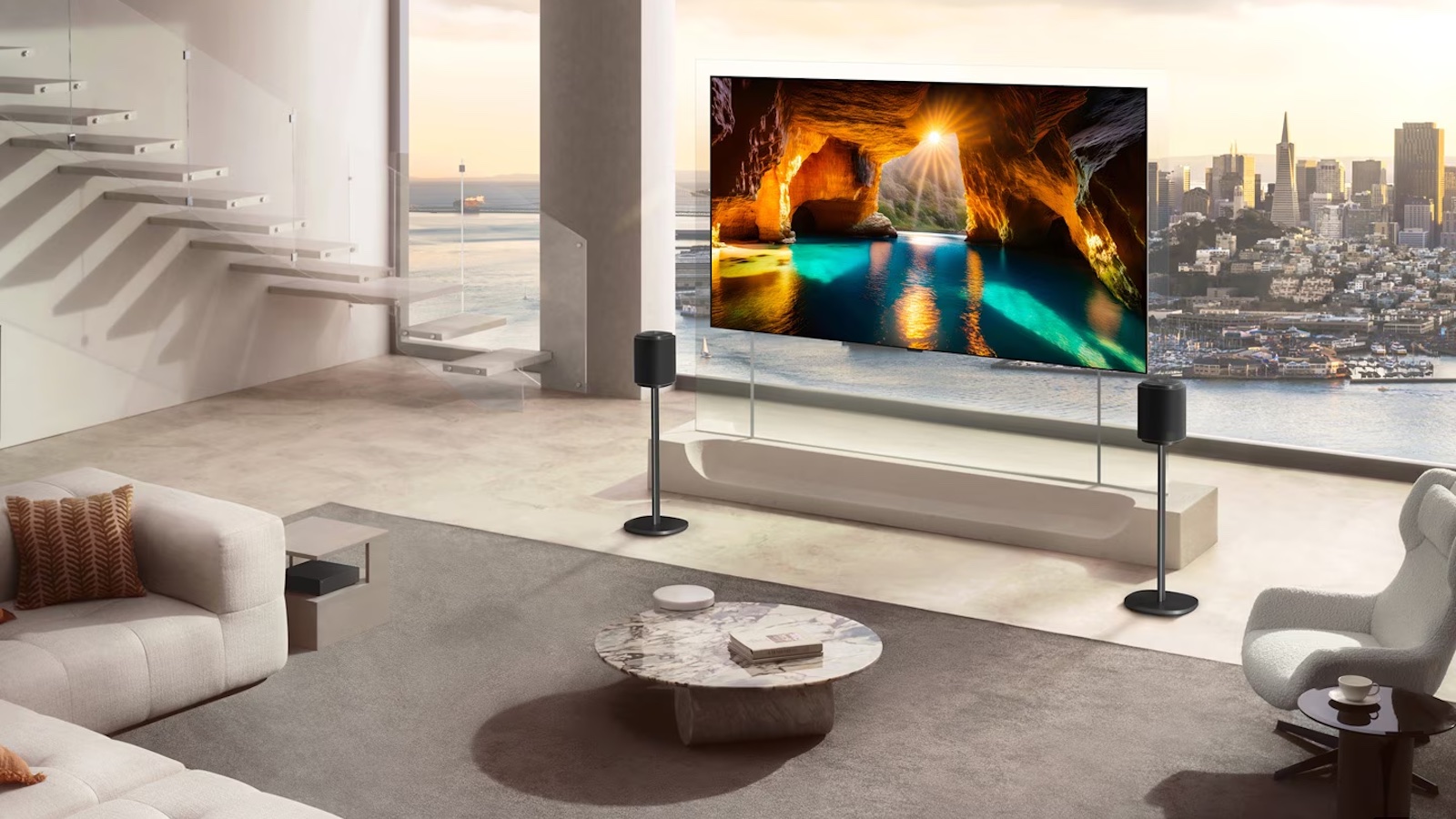Samsung Galaxy S24 vs iPhone 15: what are the differences?
We put the baseline smartphones head-to-head
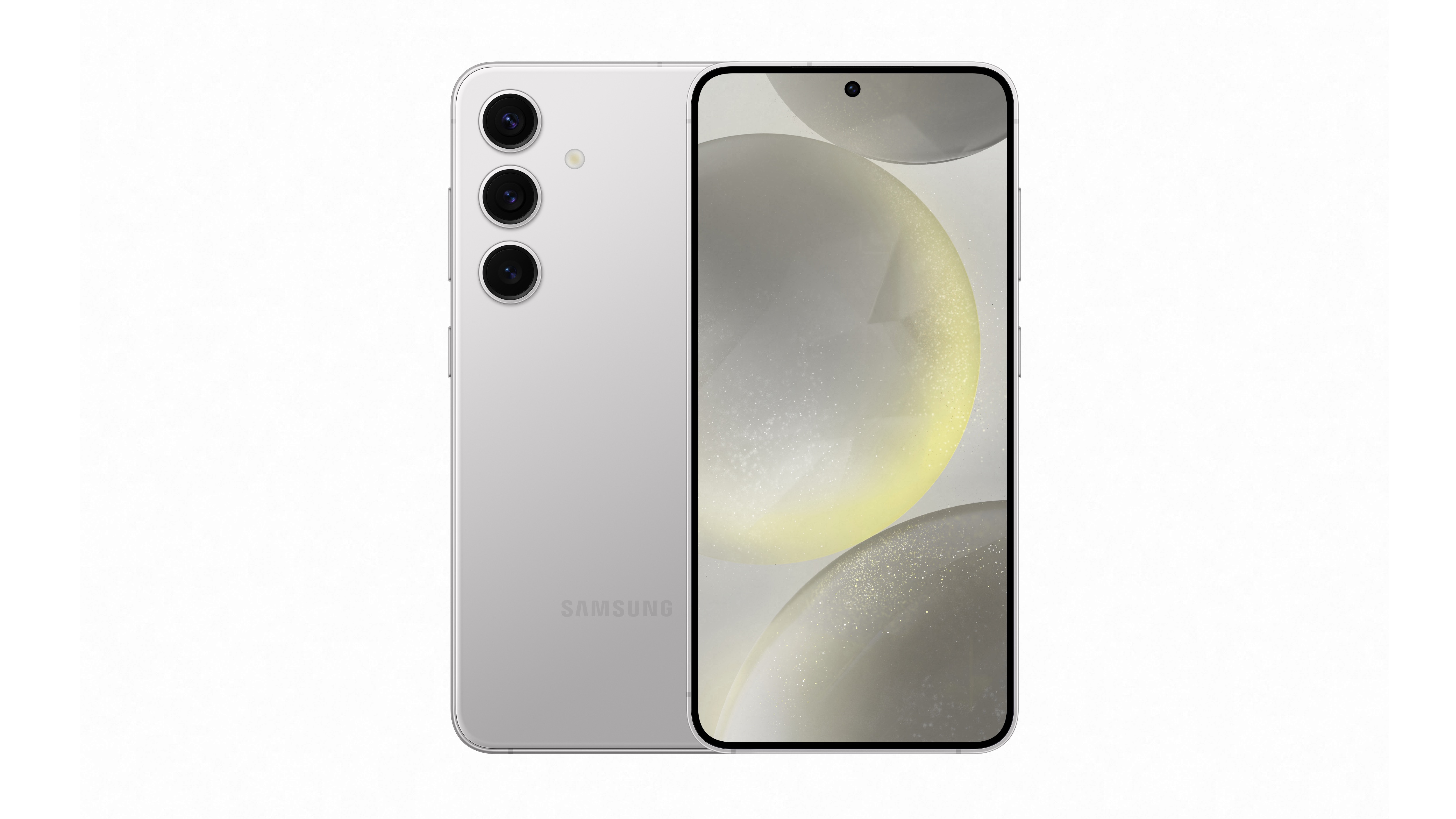
Screen size: 6.2in
Screen type: Dynamic AMOLED
Resolution: 1080 x 2340 pixels (416 ppi)
Storage: Location dependent
The Galaxy S24 is a great baseline model for the S24 family, offering a smaller size handset for those who want that, alongside a smaller price tag to match. It drops a few features of its Ultra sibling as a result, but still packs in a host of interesting AI features, variable screen refresh rate, a bright display (on paper at least), plus a strong camera system.
Pros
- Dynamic refresh rate screen
- Brighter display (on paper)
- Bigger battery
Cons
- Lower resolution display
- No camera upgrades

Screen size: 6.1in
Screen type: Super Retina XDR
Resolution: 1179 x 2556 pixels (460 ppi)
Storage: 128GB/256GB/512GB
The iPhone 15 is a good value handset for anyone looking for the Apple smartphone experience. The iOS experience is a good one, particularly for those already in the Apple ecosystem, with loads of useful new features packed into iOS 17. Its display may not be the best for gamers but we're hoping for a natural colour palette for movies, and it should sound great too.
Pros
- Bright, high-res display
- More storage options
- Upgraded cameras
Cons
- Only 60Hz refresh rate
- Pricier in some variants
Apple and Samsung are two of the biggest names in the smartphone world, so it’s not much of a surprise that the rivals like to keep a keen eye on what the other is doing. As do those who own them…
If you’re in the market for a new smartphone and wondering whether to stick with what you know or jump ship, then we’re putting the standard models of each brand’s newest smartphone up against each other to see how they compare.
Remember, Samsung just launched its three-strong Galaxy S24 family in January 2024, while the iPhone 15 range launched in September 2023. How do they hold up against one another on paper? Keep reading to find out.
Samsung Galaxy S24 vs iPhone 15: price

The Samsung Galaxy S24 and the iPhone 15 are both premium priced phones, though they are the most affordable in their respective ranges. You can find the pricing for the different storage options below.
| Storage | Samsung Galaxy S24 | iPhone 15 |
|---|---|---|
| 128GB | £799 / $799 / N/A | £799 / $799 / AU$1499 |
| 256GB | £859 / $859 / AU$1399 | £899 / $899 / AU$1699 |
| 512GB | N/A / AU$1599 | £1099 / $1099 / AU$2049 |
The two phones track each other pretty closely for price in the lower storage options, though there are some regional variances in the availability of the Samsung Galaxy S24.
For example, there is no 128GB version of the S24 in Australia, but it has a 512GB option instead – something that isn't available in the UK or US.
That means if you rely on a lot of on-phone storage and live in the UK or US, you're going to need to opt for the iPhone 15, or consider the Samsung Galaxy S24+ or the S24 Ultra.
The latest hi-fi, home cinema and tech news, reviews, buying advice and deals, direct to your inbox.
The iPhone 15 is available in all storage options in all regions. It comes up just slightly more expensive than the Galaxy S24 in the 256GB variant but has a pretty big price premium when it comes to the 512GB option in Australia.
Samsung Galaxy S24 vs iPhone 15: design
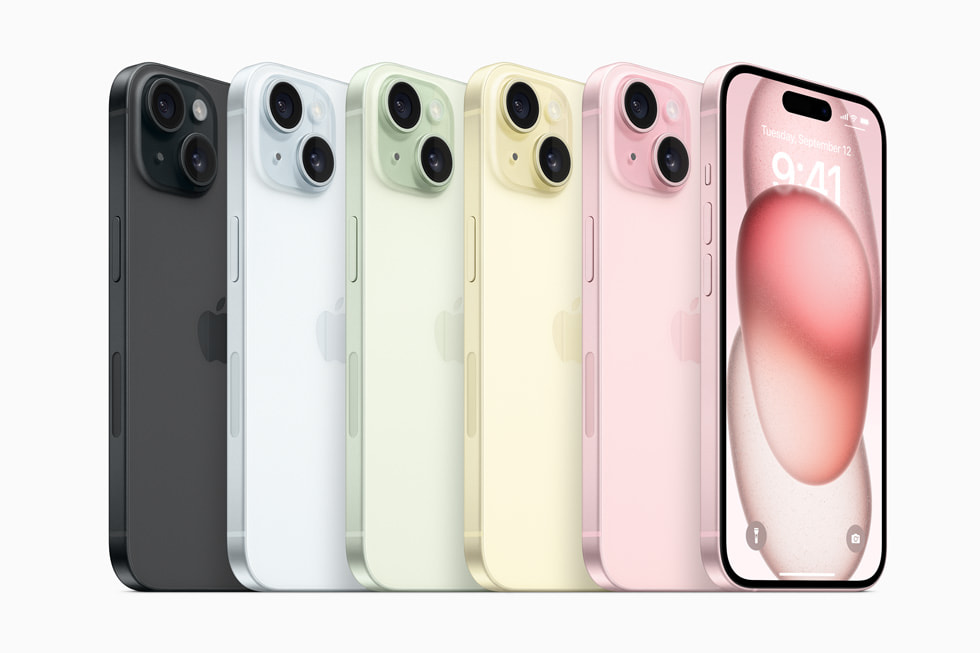
At first glance, these rival phones look very similar indeed.
They both go for flat sides, rounded edges and curved corners, and are built into compact frames that are ultimately determined by the size of their screens. The S24 pips the iPhone on that, with a 6.2-inch display, compared with the 6.1-inch display on the iPhone 15.
Despite that, the iPhone is ever so slightly taller and wider than the S24, but that’s only clear if you look at the specs. In the hand, you can barely tell – and that goes for weight too, with the iPhone 15’s 171g to the Galaxy S24’s 167g.
Both have aluminium edges, colour-matched to their back panels. For the S24, there’s a broad choice of Marble Grey, Onyx Black, Cobalt Violet, Amber Yellow, Sapphire Blue, Jade Green and Sandstone Orange.
In the iPhone 15, the names aren’t as fancy, but you can choose from a choice of pastel tones, including blue, green, yellow and pink, plus there’s your standard black as well.
Both back panels are coated in glass, but they have a more matte finish than you might think, so not as slippy in the hand. In the Galaxy S24, Samsung uses Gorilla Glass Victus 2, while Apple doesn’t name the glass used in the iPhone 15, apart from saying it is “colour infused” and “durable” thanks to a custom dual ion-exchange process. Got it? It will also be cheaper to replace than previous iterations, which is a bonus.
Perhaps the biggest design difference, though, is how the cameras look. Whereas the Galaxy S24 stacks its three main cameras on top of one another directly onto the phone’s back panel, the iPhone’s two cameras sit diagonally and are raised up on a square platform.
The front-facing cameras also look a little different. Samsung’s S24 goes for a pinhole camera design, cut into the screen, while the selfie cam on the iPhone 15 is hidden within Apple’s Dynamic Island.
Finally, both phones now charge via a USB-C port along the rear edge, following Apple’s departure from its proprietary Lightning charging port.
The big difference here, though, is transfer speeds. The iPhone 15 only supports the USB 2 standard for data transfer, limiting it to 480Mbps, whereas the Galaxy S24 features USB 3.2 Gen 2, with transfer speeds of up to 10 Gbps.
Samsung Galaxy S24 vs iPhone 15: features
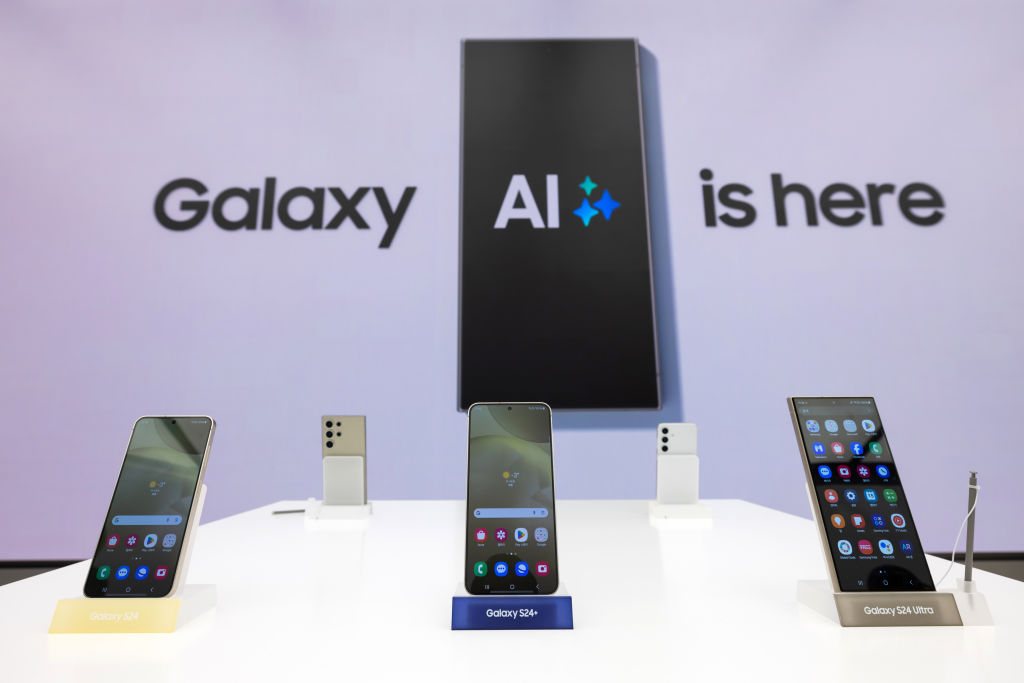
As you’d imagine with premium phones at this level, both phones are stacked with features, but one of the biggest differences between these two devices is their software.
The iPhone 15 features Apple’s latest iOS 17, while Samsung is built on Android 14 with Samsung’s One UI 6.1.
This year, Apple’s software comes with several improvements, including better personalisation, new messaging features, more interactive widgets and Apple’s new Standby mode, plus the arrival of Dynamic Island on this level of iPhone for the first time (previously, it was limited to the Pro models only).
While Apple does lean into AI with its features, Samsung goes all in. Features like Live Translate, which offers real-time, two-way translation, Circle to Search, which offers gesture-based search from pictures and Note Assist for generating automatic summaries are a few of the tricks up its sleeve.
That joins photo-based features like Generative Edit, which allows you to move subjects around, change the size of them and generate background for any gaps.
Speaking of photos, the camera setup between the two phones throws up some clear differences, but in practice, there may not be a huge difference.
The S24 has three lenses and sticks with the same camera setup as the S23 – a 50MP (f/1.8) main camera, a 12MP (f/2.2) ultrawide and a 10MP 3x zoom (f/2.4), plus a 12MP selfie cam. The iPhone 15 instead has two lenses, boosting the main camera to 48MP (f/1.6), supported by a 12MP (f/2.4) ultrawide and a 12MP front-facing camera.
While the iPhone looks to lose out on a zoom lens, the main camera actually incorporates a 2x optical zoom, made possible by cropping into the centre 12 megapixels of the 48MP sensor. It’s not exactly the same, but the two lenses are not as much of a loss as it might seem initially.
There are the usual differences in how Samsung and Apple choose to present their images – Samsung leans into the vibrant and impressive, while Apple goes a touch more natural, but you aren’t going to be disappointed with either camera.
Other notable features are mapped closely between the two rivals, including IP68 waterproofing, Bluetooth 5.3 and Wi-Fi 6E for faster wi-fi speeds and lower latency.
Battery life is also pretty similar, though Samsung may just have the edge – though it all depends on how you use your phone. The S24 packs a 4,000mAh battery and “all-day” battery life promises, while the iPhone 15 has a reported (though not confirmed by Apple) 3349mAh battery with 20 hours of video playback.
When it comes to charging them back up again, the S24 supports 25W wired charging and 15W wireless, while the iPhone 15 offers 20W wired, 15W via MagSafe and a slower 7.5W if using a Qi wireless charger.
Running all of this are two pretty powerful processors. That said, Apple, for the first time, has kept an older processor here – using the Apple A16 Bionic introduced in the iPhone 14 family and only moving the 15 Pro models up to the new A17 Bionic.
The A16 isn’t exactly lacking in power though, with a 6-core CPU, 5-core GPU, a 16-core Neural engine, and 6GB of RAM supporting too.
The S24’s processor depends on where in the world you are, with Qualcomm’s Snapdragon 8 Gen 3 powering the phone in America but with Samsung’s own Exynos 2400 stepping in for Europe – but both with 8GB RAM.
You are unlikely to find yourself wanting for power in either, but benchmark tests largely come up in the S24’s favour.
Samsung Galaxy S24 vs iPhone 15: picture
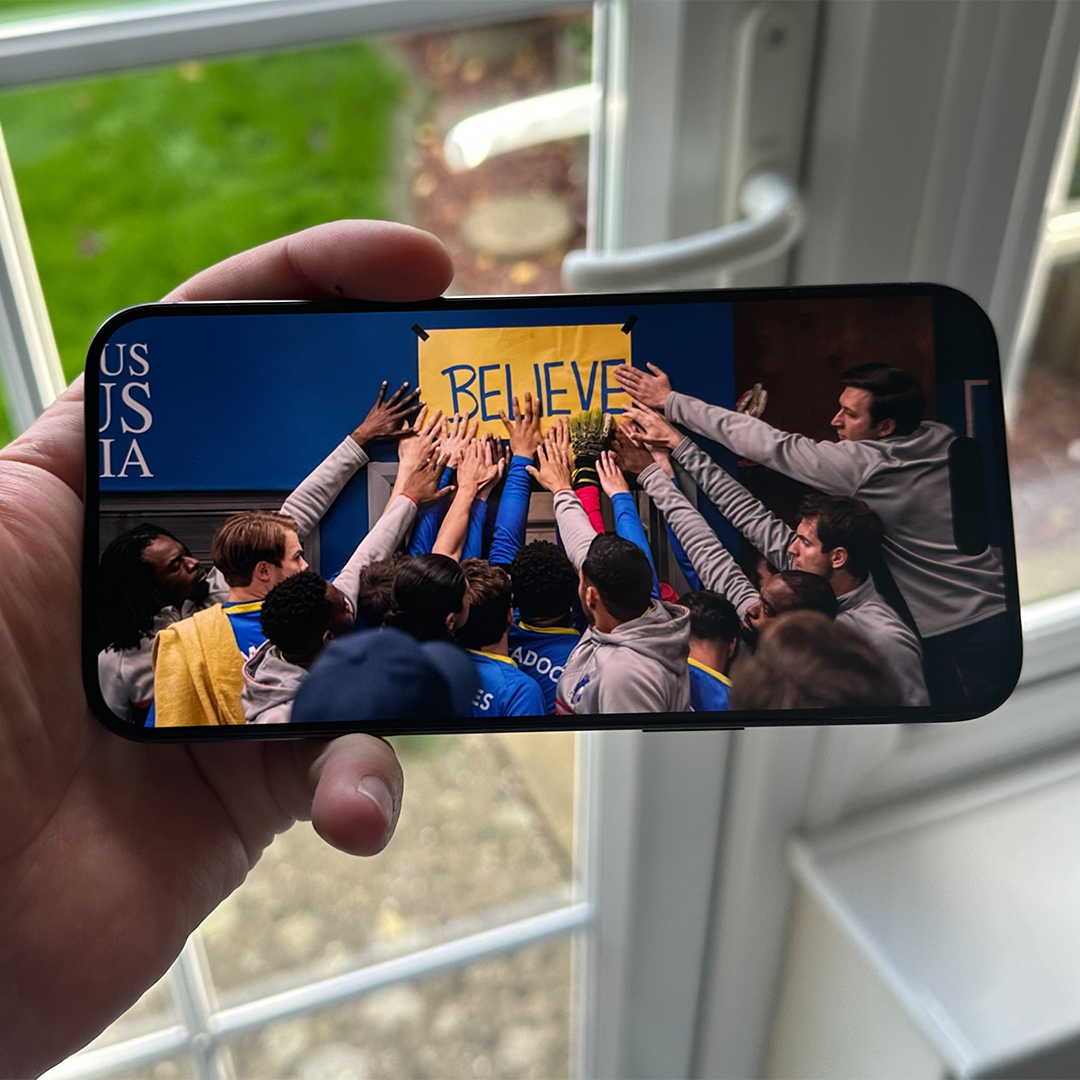
We've already established that the Galaxy S24 has a slightly larger screen than the iPhone 15, at 6.2 inches and 6.1 inches respectively. However, Samsung's handset also holds the ace when it comes to its variable refresh rate, offering 1-120Hz depending on what is on the screen, helping to keep things smooth and snappy while also lowering battery consumption.
The iPhone 15, by comparison, has a static 60Hz refresh rate, which still runs perfectly smoothly for the majority of tasks. However, it means the most demanding games might not run quite as well as they do on the S24.
The iPhone 15 is also pipped when it comes to brightness, with a 2,000 nit peak compared with the S24's 2,600 nits. As we know from the best 4K TVs, though, these peaks don't come into effect much in use, and you're unlikely to see much difference in day-to-day use.
Unlike the higher resolution of the S24 Ultra, the S24 sticks with full HD for its display, offering 2340 x 1080 pixels and a 416ppi pixel density. The OLED display of the iPhone 15 just pips it on paper, with 2556 x 1179 pixels and a 460ppi pixel density, but once again, you're unlikely to find yourself wanting with either display. They're crisp, clear and great for watching movies when you're on the go.
We haven't tested both together, but going on our experience of the S24 Ultra, colours could be ever so slightly more vibrant on the Samsung. If you prefer a more natural colour balance, then the iPhone 15 could be the better choice.
Samsung Galaxy S24 vs iPhone 15: sound
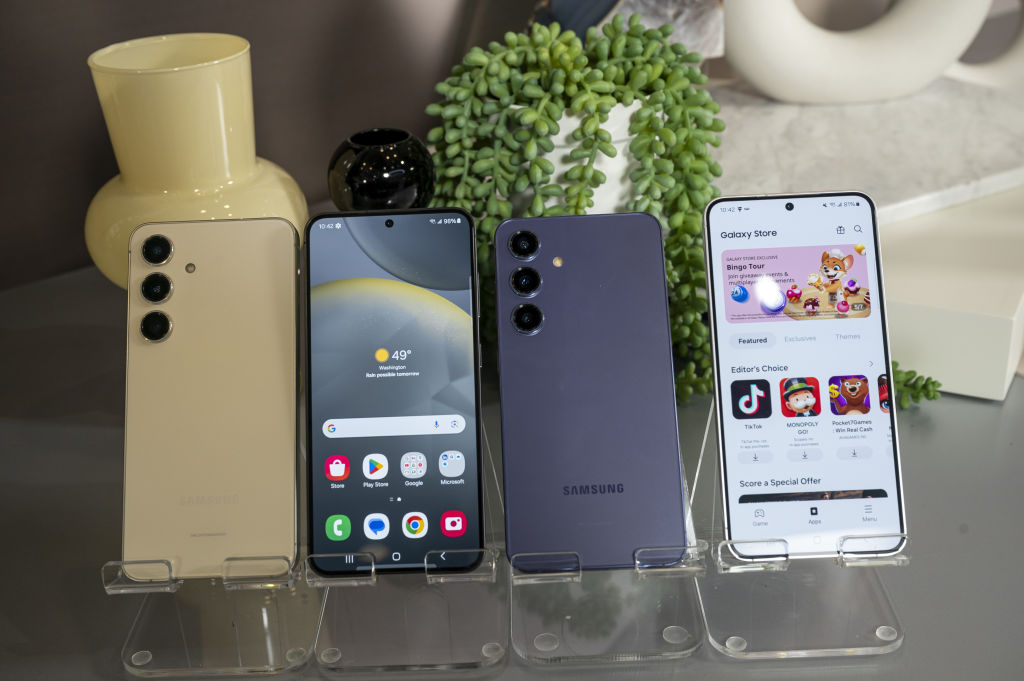
The audio on the Galaxy S24 looks to be pretty much identical to the S24 Ultra, offering stereo sound through a bottom-firing speaker plus the earpiece. There’s no 3.5mm jack, of course, so you’ll need a USB-C-to-3.5mm adapter, a pair of USB-C headphones or opt to go wireless.
If you choose the latter, there’s the aforementioned Bluetooth 5.3 support with Bluetooth Low Energy (LE), and there’s also support for Dolby Atmos audio baked in.
If our experience with the S24 Ultra is anything to go on, we’d expect an energetic sound but one that might lack a little subtlety.
Samsung has improved the mids in the S24 family, but that comes at a cost of some of the richness in the low end. Still, we found the soundstage to be decently spacious with plenty of clarity that should work just fine for casual listening on the go – and it’ll go decently loud without headphones too.
The iPhone 15 offers a similar setup, with stereo sound from a bottom-firing speaker and earpiece, plus the same support for Bluetooth 5.3 and Dolby Atmos.
We’ve long admired the way Apple handles sound on its phones and if our experience on the 15 Pro Max is anything to go by, we’d expect to be similarly impressed here. We liked the full-bodied, energetic sound, alongside a cleaner, smoother treble, and decent speakers with impressive dynamic range.
We’ll update this with model-specific experience once our full reviews are published.
Samsung Galaxy S24 vs iPhone 15: early verdict
While we are yet to publish our full reviews on these two smartphones, our experience with their more expensive siblings, plus proper analysis of their specs and early hands-on experience gives us a good idea of how they will compare. And it comes very close indeed.
With similar prices and specs that leave very little in it, it is going to come down to the user experience that sways you either way. Firstly, whether you prefer iOS or Android is undoubtedly going to be a biggie. Whether you're impressed by an impressive range of AI smarts may well be another.
But while the on-paper specs may tip towards Samsung's offering too, our experience elsewhere in the range suggests the iPhone 15 may just have the edge from a sound and picture perspective.
We'll have to confirm that once our full testing has been completed.
MORE:
Samsung Galaxy S24 vs S24 Ultra: what are the differences?
Head over to our iPhone 15 Pro Max review
Leaning towards the competition? Check out our Samsung Galaxy S24 Ultra review
Verity is a freelance technology journalist and former Multimedia Editor at What Hi-Fi?.
Having chalked up more than 15 years in the industry, she has covered the highs and lows across the breadth of consumer tech, sometimes travelling to the other side of the world to do so. With a specialism in audio and TV, however, it means she's managed to spend a lot of time watching films and listening to music in the name of "work".
You'll occasionally catch her on BBC Radio commenting on the latest tech news stories, and always find her in the living room, tweaking terrible TV settings at parties.

